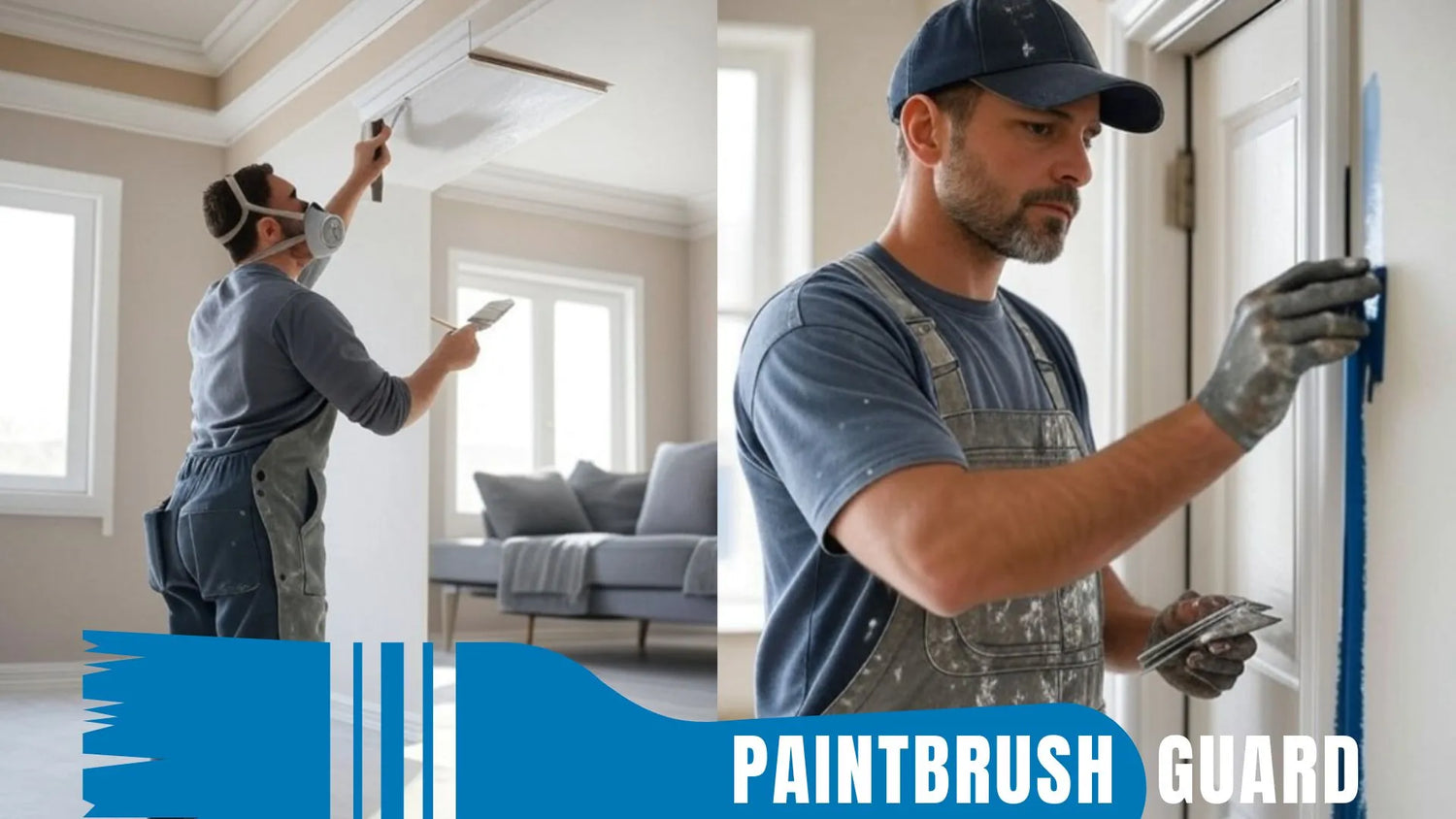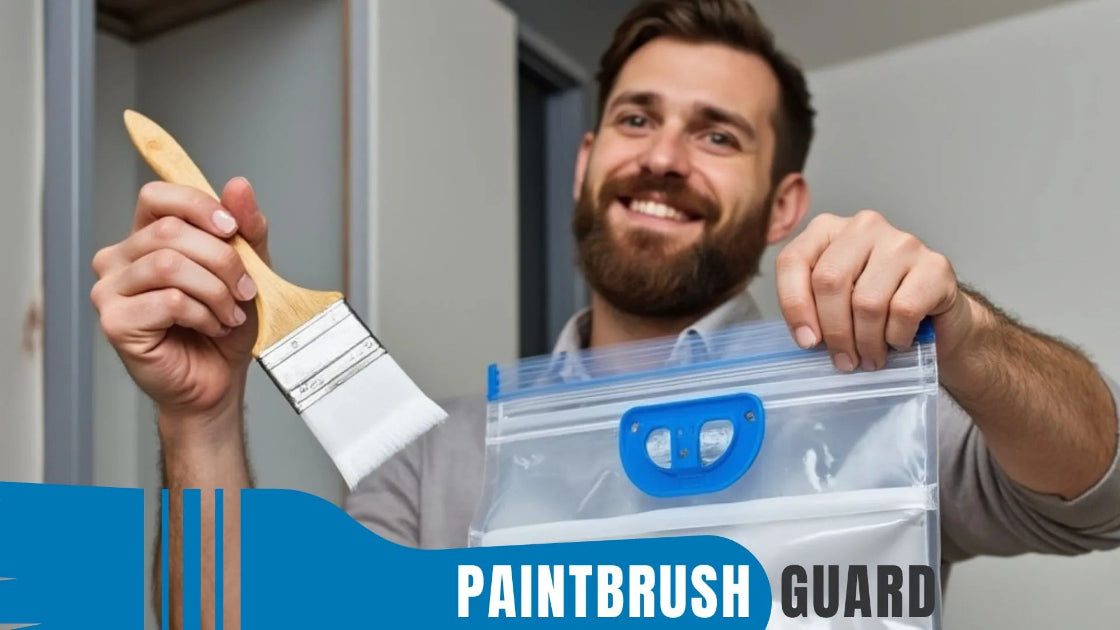
How to Clean a Paintbrush: Best Step-by-Step Methods for Latex, Oil, and Dried Paint
|
Time to read 5 min
|
Time to read 5 min
Learn the best way to clean a paintbrush with our step-by-step guide. Tips for latex, oil-based, and acrylic paints, removing dried residue without thinner, using soap and water for pro results, and extending brush life to save money on home painting projects.
For water-based paints like latex or acrylic, the best cleaning method is simple: rinse the brush under warm water immediately after use.
Start by wiping excess paint onto a rag or paper towel to reduce mess. Then, run the brush under warm water, using your fingers to work the paint out of the bristles.
Add a few drops of mild dish soap to break down stubborn residue, lather the bristles, and rinse until the water runs clear.
This process takes about 5–10 minutes and ensures the bristles stay soft and free of dried paint, ready for your next project.
With no cleanup required after a painting session, you can take a short break mid-project or wrap up your painting for the day, your brush stays ready without the need to clean.
Oil-based paints require a different approach due to their chemical makeup. The best way to clean these brushes is with a solvent like mineral spirits or paint thinner.
Pour a small amount of solvent into a container, then swirl the brush in it to loosen the paint.
Wipe the bristles on a rag to remove excess, and repeat until most of the paint is gone.
Follow up by washing the brush with warm water and dish soap to remove any solvent residue, then rinse thoroughly.
This method takes 10–15 minutes but is effective for keeping bristles in good condition, though you should work in a well-ventilated area to avoid inhaling fumes.
Paintbrush Guard offers a revolutionary alternative to traditional cleaning, making it one of the best ways to maintain a paintbrush without the hassle.
This tool vacuum-seals the brush, keeping bristles wet and paint fresh for days, so you can skip cleaning during breaks.
Simply seal the brush in the guard after use, no rinsing needed. When you’re ready to paint again, the brush will be as wet as when you stopped, saving 15–30 minutes per session.
This method not only simplifies maintenance but also prevents wear from repeated cleaning, extending the brush’s lifespan.
After cleaning, drying the brush correctly is crucial to prevent damage. Shake off excess water or solvent, then blot the bristles with a clean cloth or paper towel.
Use your fingers to reshape the bristles to their original form, whether flat or pointed, to avoid splaying.
Hang the brush vertically with bristles pointing down or lay it flat to air dry, which takes a few hours. Avoid standing the brush upright on its bristles, as this can deform them over time.
Proper drying ensures the brush stays in good shape for future use, maintaining its performance.
Save time with Paintbrush Guard vacuum storage: Transforms your painting experience by eliminating the time-consuming task of cleaning brushes, offering a fast, efficient solution for both DIY painters and professionals.
If paint has dried on your brush, the best cleaning method involves soaking to loosen it, though the Paintbrush Guard can prevent this issue.
For water-based paints, soak the brush in warm, soapy water for a few hours, then use a brush comb to gently remove the paint.
For oil-based paints, soak in paint thinner or a cleaner like Krud Kutter for 12–24 hours, then scrub with a wire brush.
If the bristles remain stiff, the brush may be beyond saving, using a hardened brush can lead to streaks. Prevention with the Paintbrush Guard is always better than dealing with dried paint.
Painting interior walls? Our 10-step beginner guide with product recommendations ensures a flawless, professional finish for any room.
To clean a paintbrush effectively, avoid mistakes that can damage it. Don’t let paint dry on the brush, clean or seal it immediately after use.
Avoid soaking brushes in water or solvent for too long, as this can loosen the ferrule and cause bristles to fall out.
Don’t use hot water for cleaning, as it can damage natural bristles or melt synthetic ones.
Also, skip harsh chemicals unless necessary, as they can degrade the brush over time. By following these best practices, you’ll keep your brush in excellent condition with minimal effort.
Discover how house paint colors influence mood & get expert tips on choosing the best colors for every room to create a vibrant, harmonious home environment.
The best way to clean a paintbrush varies by paint type: warm water and soap for water-based paints, solvents for oil-based paints, or the Paintbrush Guard to skip cleaning altogether.
Proper drying, reviving dried paint when needed, and avoiding common mistakes further ensure your brush stays in top shape.
By using these methods, especially the Paintbrush Guard for a hassle-free approach, you’ll maintain your brushes effectively, ensuring they’re always ready for your next painting project.
For water-based paints like latex or acrylic, rinse the brush under warm water immediately after use, wiping excess paint onto a rag first. Work in mild dish soap with your fingers to remove residue, then rinse until the water runs clear. This quick, gentle method keeps bristles soft and ready for future projects without damaging the brush.
Clean brushes used with oil-based paints by swirling them in a small amount of solvent like mineral spirits or paint thinner in a container. Wipe bristles on a rag to remove paint, repeating until clean. Finish with warm water and dish soap to remove solvent residue. Work in a well-ventilated area to avoid fume inhalation and maintain bristle quality.
After cleaning, shake off excess water or solvent and blot bristles with a clean cloth. Reshape the bristles to their original form using your fingers. Hang the brush vertically with bristles pointing down or lay it flat to air dry, avoiding upright storage on bristles to prevent deformation and ensure long-term performance.
For dried water-based paint, soak the brush in warm, soapy water for a few hours, then use a brush comb to remove paint. For oil-based paint, soak in paint thinner or a cleaner like Krud Kutter for 12–24 hours, then scrub with a wire brush. If bristles remain stiff, the brush may need replacement to avoid streaky results.
Don’t let paint dry on the brush; clean it immediately after use. Avoid soaking brushes too long in water or solvent, as this can loosen the ferrule and cause bristle loss. Don’t use hot water, which can damage bristles, and avoid harsh chemicals unless necessary to prevent degradation and maintain the brush’s condition.

Learn about eco-friendly painting, tips and tutorials on house interior and exterior surfaces, so you can get started with your project without any surprices during or after your painting.

Learn how interior house paint colors influence mood with expert tips on room preference so you can pick the best colors for a harmonious home environment.
We focus on the most popular shades for each interior colors, so you don't miss no matter what color you pick.

Learn how this innovative tool allows you to store paintbrushes without the need for immediate cleaning, offering significant advantages in time savings, water conservation, reduced chemical pollution, and lower costs for supplies.



